
14 minute read
THIRTY YEARS OF SUPPORT AND INVESTMENT
EXCLUSIVE
His Excellency
Advertisement
URS SCHMID
THIRTY YEARS OF SWISS SUPPORT AND INVESTMENT
Switzerland’s cooperation with Serbia started in 1991 with humanitarian aid and eventually evolved to the highest level in all segments of our bilateral relations. We talked with Urs Schmid, the ambassador of the Swiss Confederation in Serbia, about Swiss investments, assistance, and sustainability lessons, as well as the beauties of Serbia and Belgrade. Exclusively for this occasion, His Excellency opened the doors of his residence to us
By:
GORDANA KNEŽEVIĆ MONAŠEVIĆ
Photo:
DARIO KONSTANTINOVIĆ
S
peaking of Switzerland and its presence in Serbia, there is almost no sector of cooperation in which exceptional results have not been achieved. Switzerland is one of the largest foreign investors in Serbia, with almost two billion net investments in the last 12 years, and one of the most significant bilateral donors, with more than 400 million euros in official development assistance so far. Considering the extremely extensive cooperation in all segments and the long list of official visits and bilateral meetings he has every day, there is no doubt that His Excellency Urs Schmid is one of the busiest ambassadors in Belgrade, although you will not notice a trace of haste or stress on him. Right away, at the reception at the residence, he disarmed us with his gentlemanly manners and, above all, his hospitality. The welcome late breakfast, served on the terrace of the residence with a fantastic view of the lush garden in yellow and red autumn tones, was an unexpected bonus with a double diplomatic effect. Not only did we discover why “raclette”—hot, melted raclette cheese served with boiled potatoes, gherkins, and pickled onions—is a favorite Swiss national dish, but we realized that it is really easier to talk with “raclette,” even on the most serious topics.
Urs Schmid is an experienced diplomat, and it is really a pleasure to talk to him. The beautiful exterior and interior of the residence—which was completely renovated in 2016 and whose functional, modern, and classy design is also due to our architectural studio, Arhi.pro—only enriched our conversation and served as an inspiring introduction. Guests are happy to come here for dinners and events, and the ambassador admits that he is privileged to have lived in this villa for two years, discreetly tucked away on one of the slopes of Senjak, whose garden leaves you breathless when you step inside it.
The Residence in Senjak has been hosting a number of artistic and cultural events in recent years, and we are aware that visitors enjoy coming here. How did you feel about your new home when you first moved in? Did you make any interior changes to suit your preferences and needs?
— It is true that the Ambassador of Switzerland in Serbia is lucky to have at his or her disposal a beautiful residence in Senjak since 1963. Owned by the Swiss government, it was completely renovated in 2016, and it allows me to host many different types of events. I usually receive positive feedback from our guests, especially when we can use the lush garden. One of my predecessors, who was posted in Belgrade during the 1990s, mainly designed the garden as it is today.
After an interruption of two years due to the COVID pandemic, I was able to organize this year again our traditional National Day celebration on August 1. As many as 400 guests enjoyed our outdoor party and tasted the typical Swiss “raclette” prepared
The small salon stands out for its comfort and functional elegance
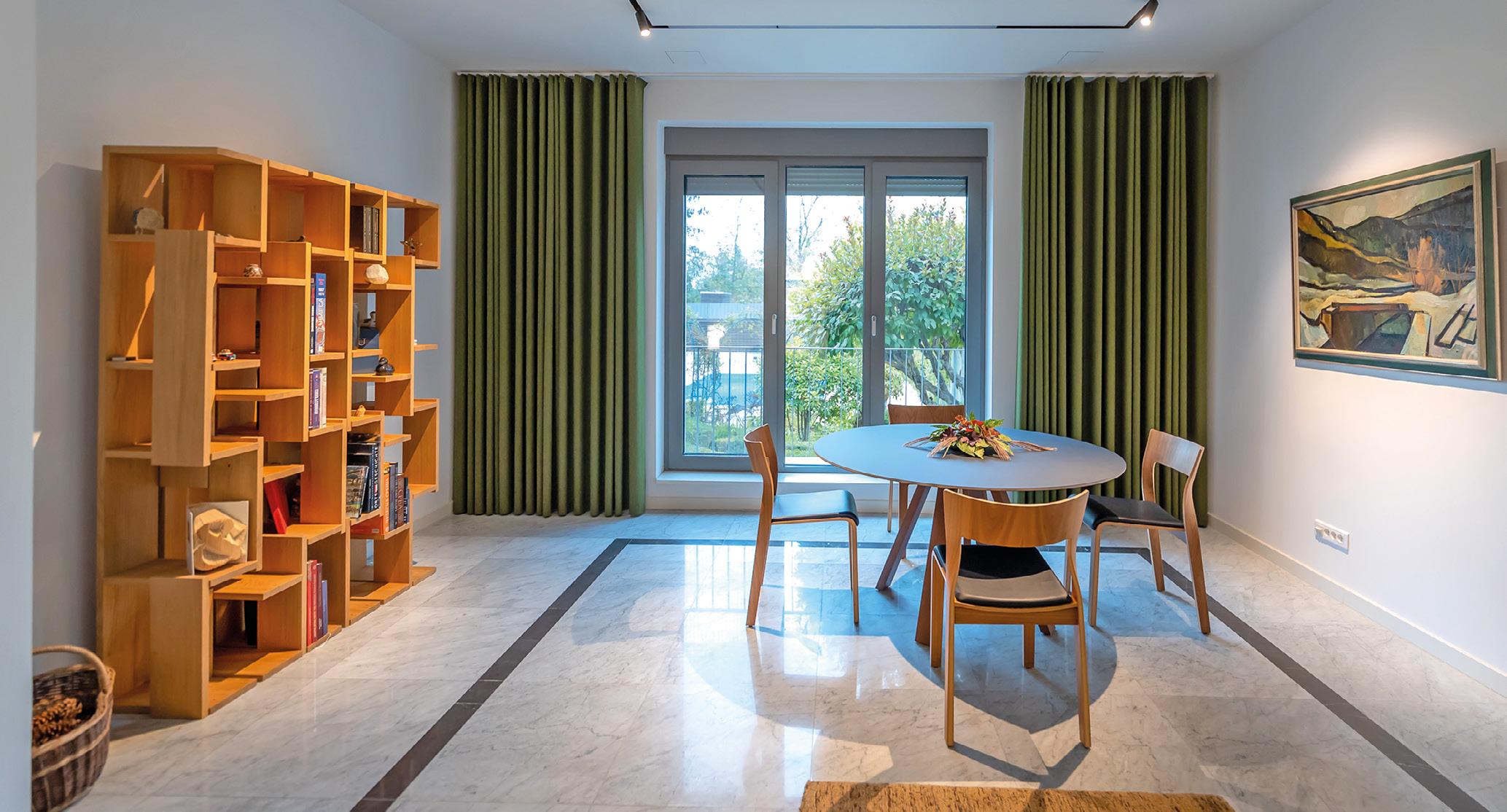
under the huge pine tree. Furthermore, the interior of the residence, with its combination of functionality and elegance, allows for the successful accomplishment of all representational tasks of a diplomatic mission. In this sense, there was no need for me to undertake any major adaptations when I arrived in Belgrade.
Will you carry on your predecessors’ tradition by planning fresh cultural activities at the residence? You once declared that the new Culture for Democracy program will increase Switzerland’s support for Serbian culture and the arts to a greater extent...
— With our Culture for Democracy project, launched in 2021, we have indeed shifted our approach to provide more comprehensive support to the cultural scene in Serbia. With this intervention, worth one million euros over the period until 2025, the aim is to foster a social space where pluralistic and democratic values, intercultural dialogue, and tolerance are promoted. We focus on supporting independent cultural actors outside of Belgrade since the culture scene in the capital city is already very rich. The project is implemented by our partner Heartefact Foundation and has so far supported 19 projects amounting to EUR 232,000.
The Embassy also continues to support the organization of cultural events, either at the residence or in other locations, with a special emphasis on presenting the work of younger artists. It remains our key
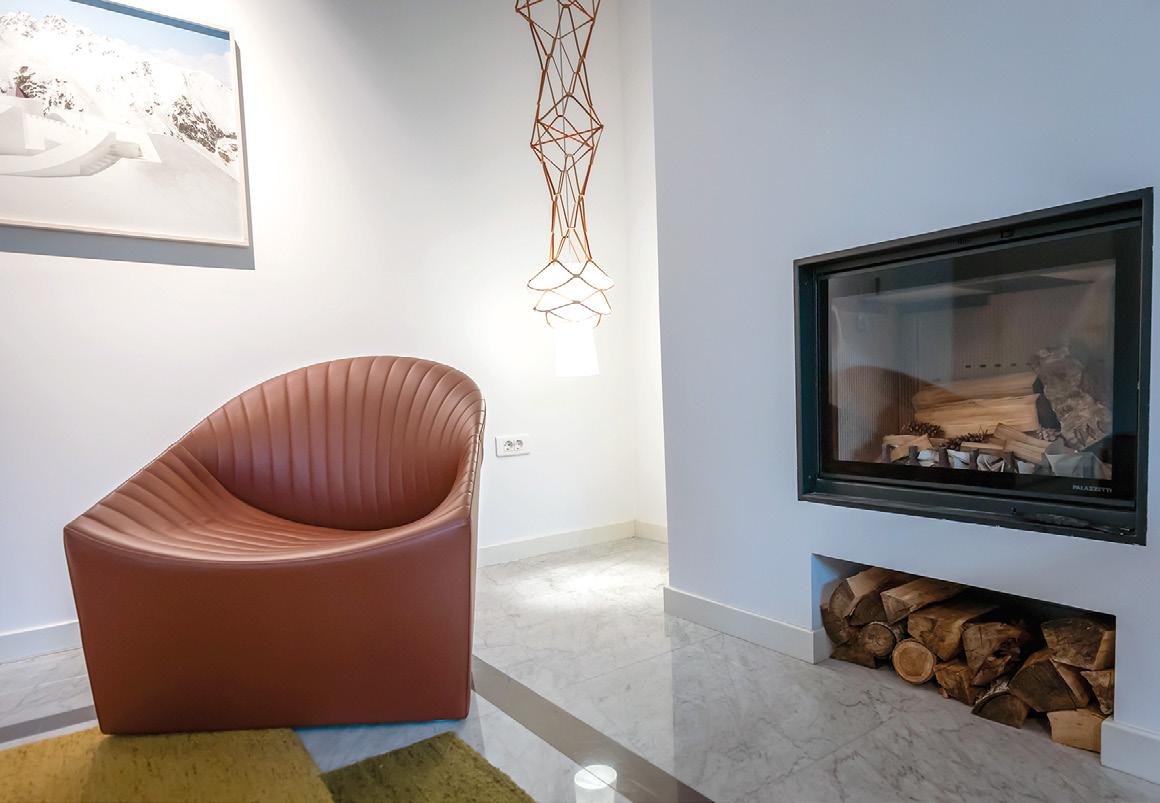

objective to foster links between Swiss and Serbian culture, which is quite natural when you think of the large Serbian diaspora in Switzerland and the many dual nationals residing in Serbia and Switzerland.
The importance of Swiss assistance to Serbia extends far beyond just cultural matters. You just recently unveiled a brand-new, 90 million-euro, four-year program of cooperation with Serbia. What is included in it?
— Switzerland’s cooperation with Serbia started in 1991, more than 30 years ago, with humanitarian

The vibrant details fit perfectly into the minimalist interior design

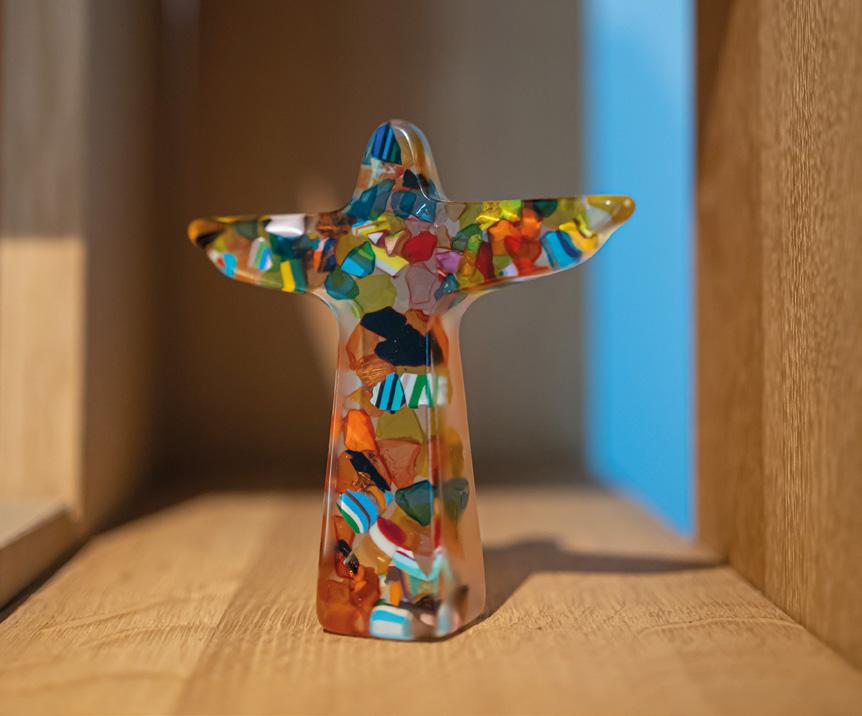
aid and assistance to migration management. Over time, this support has evolved into a comprehensive cooperation program. Switzerland is ranked among the most important bilateral donors in Serbia, having spent more than EUR 400 million in official development assistance so far. This continuous and substantial presence has left many footprints, which form the basis for our current Cooperation Programme 2022-2025.
Well known for being a highly decentralized country, Switzerland traditionally focuses on the local level, working with municipalities on improving services and participatory practices. Private sector development and employment is another traditional field of Swiss engagement. During the next four years, our support to assist Serbia in turning dual vocational education and training into a success story will be significantly intensified. In addition, local SMEs will be assisted to better participate in the value chains of larger foreign direct investments. Last but not least, engaging in the fight against climate change has become a top priority. In line with the Green Agenda for the Western Balkans, Switzerland will comple-
Autumn decoration
THANKS TO THE “BUILDINGS PROGRAMME”, THE SWISS BUILDING STOCK HAS BEEN ABLE TO REDUCE ITS ANNUAL ENERGY CONSUMPTION BY 2.8 BILLION KILOWATT HOURS (KWH) AND ITS ANNUAL CO2 EMISSIONS BY 750,000 TONS
ment its current portfolio in renewable energy, energy efficiency, and sustainable urban planning with more comprehensive climate mitigation and adaptation measures.
A portion of this program will be directed at improving energy efficiency, which has long been one of the standards in the Swiss real estate industry. How far has Switzerland’s adoption of green building practices come?
— In Switzerland, buildings are responsible for 44% of energy consumption and about one-third of emissions. Despite the efforts made in recent years, the need for renovation remains high. A majority of buildings are still heated with fossil fuels or direct electricity, and many buildings have insufficient insulation. Renovation can have a considerable impact: depending on the building, better insulation can reduce the heat requirement by more than half. Moreover, switching from fossil fuel heating to renewable energy sources can reduce CO2 emissions to almost zero. Switzerland’s new energy strategy (“Energy Strategy 2050”) aims to reduce the energy consumption of Swiss buildings to 55 TWh by 2050. In addition, to achieve the Paris climate agreement objectives,
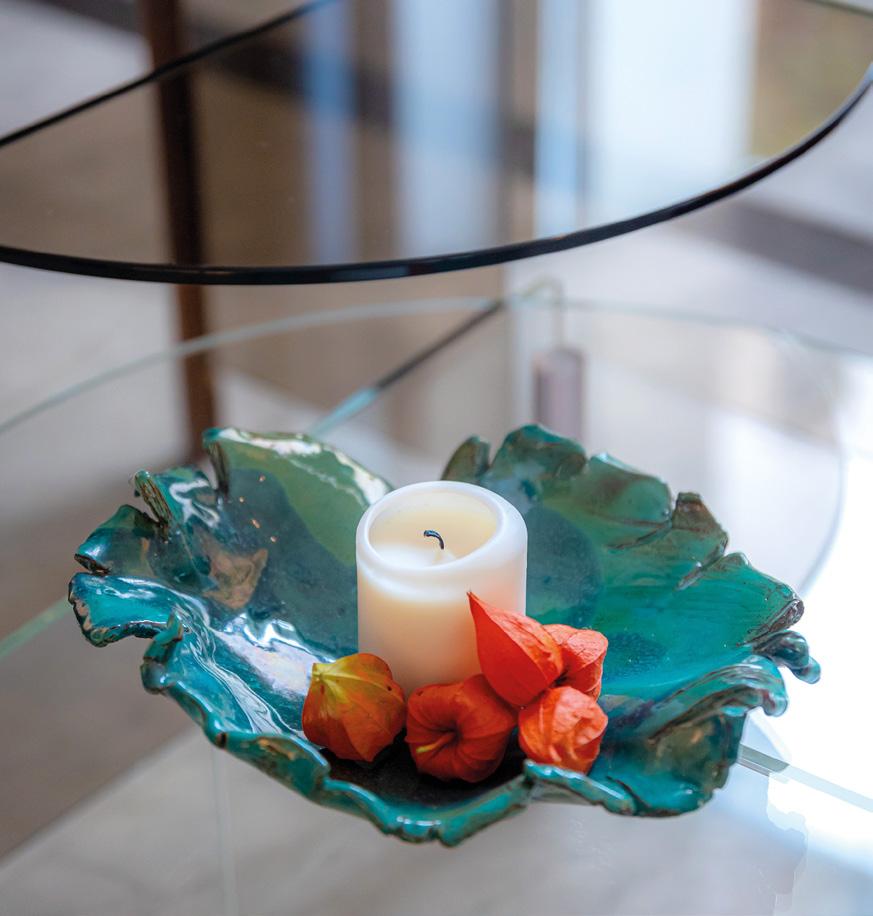


the Federal Council has decided to reduce net CO2 emissions to zero by 2050.
To this end, the “Buildings Programme” of the Federal Government and the Cantons supports structural energy-efficiency measures in the building sector. Since its launch in 2010, the program has proven itself as an effective instrument of energy and climate policy in Switzerland. A total of CHF 2.7 billion of subsidies have been paid out under this scheme, and the Swiss building stock has been able to reduce its annual energy consumption by 2.8 billion kilowatt hours (kWh) and its annual CO2 emissions by 750,000 t. The effect of the subsidized measures cumulates over the lifetime of the project to almost 72.1 billion kWh and over 17.8 million t of CO2.
In Switzerland, real estate has long been regarded as a secure investment, and the building sector is regarded as progressive and sustainable. What are the present real estate market and construction trends in Switzerland, especially in light of the severe effects of the global crisis on these industries?
— Indeed, investors tend to view the Swiss real estate market as a safe harbor that is more crisis-resistant than in other countries. But to answer your question, let me mention the role of the “Sustainable Construction Network Switzerland” (SCNS), a platform founded by leading private and public enterprises whose goal is to make sustainable construction the norm in Switzerland. To this end, SCNS promotes cooperation between business, government, education, politics and science. SCNS also develops and promotes the “Swiss Sustainable Building Standard SNBS” which is used as the basis for planning of new building projects in Switzerland. In accordance with the federal government’s Energy and Climate Exemplarity initiative, certification according to SNBS or Minergie-P/A-ECO® should become the norm for all new buildings.

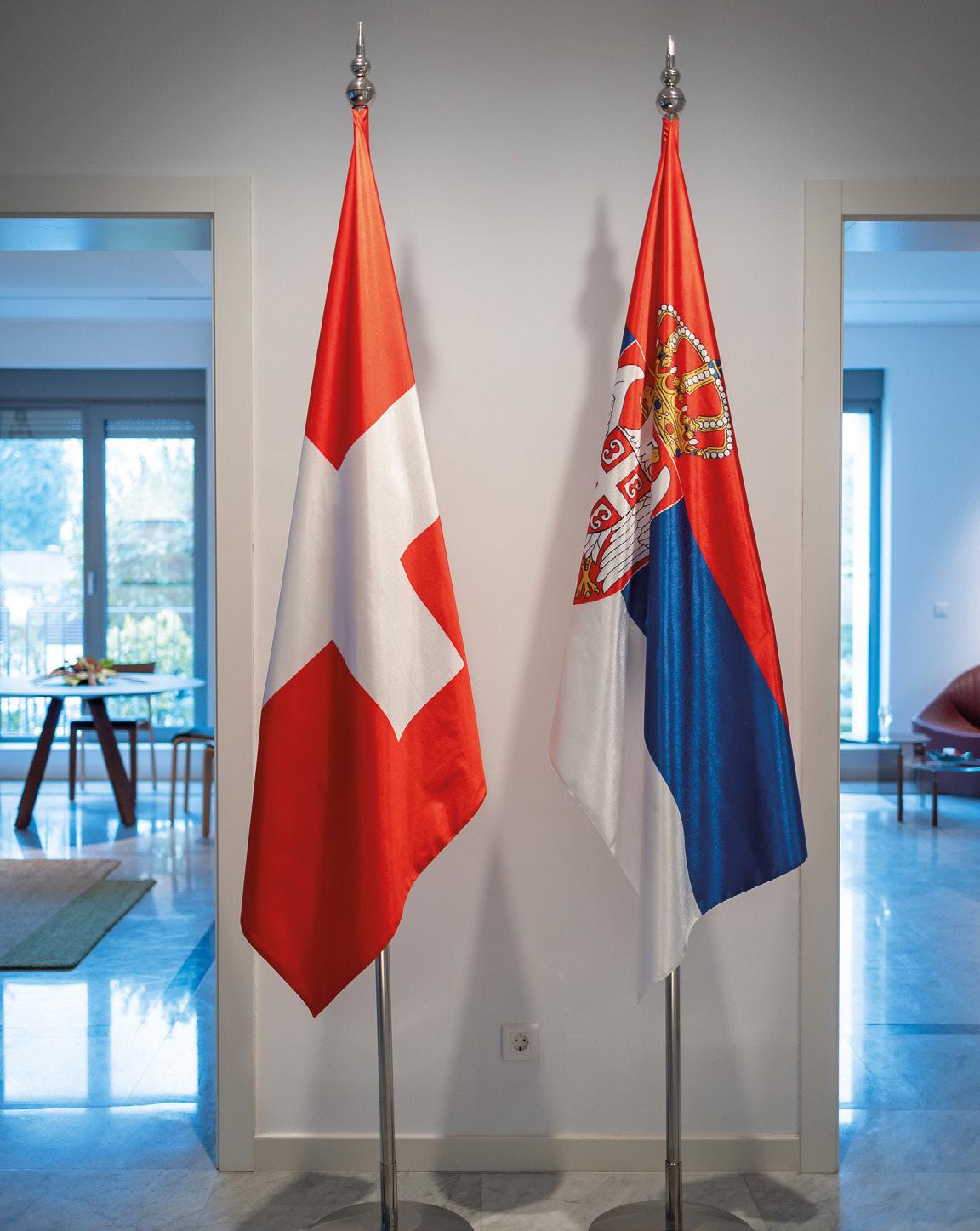
Flags of Serbia and Switzerland in the hall of the residence
Switzerland is one of the largest foreign investors in Serbia. What industries are most appealing to Swiss companies and which recent investments do you consider to be the most significant? — Swiss investors are very well established in Serbia and we have witnessed growing interest in recent years. With EUR 1.8 billion of net investments in the period 2010 – QI 2022, Switzerland ranks among the top six foreign investors in Serbia. We estimate that Swiss companies in Serbia generate over 12.000 jobs. Last year, for example, Switzerland was the second biggest foreign investor in Serbia with EUR 650 million invested. Recent large investments include the opening of a production site of Regent Lighting in Svilajnac, the opening of TX Services in Belgrade and the construction of the Barry-Callebaut chocolate factory in Novi Sad. SIKA has expanded its production facility in Šimanovci, by bringing a further
mortar facility and a new warehouse for raw materials on its site. Nestlé has opened a new plant for plant-based products in Surčin. Another highlight of our successful bilateral economic relations is the acquisition and “roll-in” of the first Swiss high-speed trains of Stadler Rail exactly one year ago. Successfully operating on a daily basis from Belgrade to Novi Sad to the satisfaction of all passengers, they are heralding the dawning of a new era of public transport in Serbia. Interesting sectors for Swiss investors are above all the ICT sector, wood and metal processing, furniture production, environmental protection and renewables, waste processing and real estate. In parallel, we are delighted to note that Switzerland has also emerged as a top investment location for Serbian companies, mostly in the ICT sector.
Swiss investors are becoming more interested in Serbia’s real estate market and construction sector, well-known Swiss companies, like Sika and Holcim, have a significant presence there. How important is this sector of our two countries’ economic cooperation, and are there any upcoming similar investments?
— With large infrastructure projects underway, the growing need in the construction sector offers major business potential for Swiss companies, both for those already present on the Serbian market and for new Swiss investors. Swiss products are already very present in the construction sector in Serbia. Think, for example, of Schindler lifts in buildings, SIKA construction materials involved in many major infrastructure projects, Holcim’s acquisition of Teko Mining this year, whose high-quality aggregates are useful in asphalt production, railway construction, and high-strength applications, or Sauter’s solutions for building management and room automation.
Swiss investors are also increasingly interested in investments in real estate and renewable energies. For these investments to become more substantial, however, one important aspect is ensuring that administrative and legal procedures in Serbia are efficient, functional, and independent.
Despite lacking a sea, like Serbia, Switzerland was able to maximize its natural beauty and generate top-notch tourism. We are attempting to do with our spas and mountains what you have done with the Alps and lakes. The recent entry of the renowned Swiss hotel brand Mövenpick in Vrdnik further proves that we are on the right track. What else do we need to maximize our tourist potential?
— Switzerland and Serbia have indeed a number of similarities: they are roughly similar in size and population, landlocked, at the crossroads of different cultural influences and proud of their respective traditions. Both countries have an immense wealth of scenic and cultural attractions. In Switzerland, tourism has become a major sector of the economy, and this is mainly thanks to the development of an adequate hospitality and transport infrastructure. The

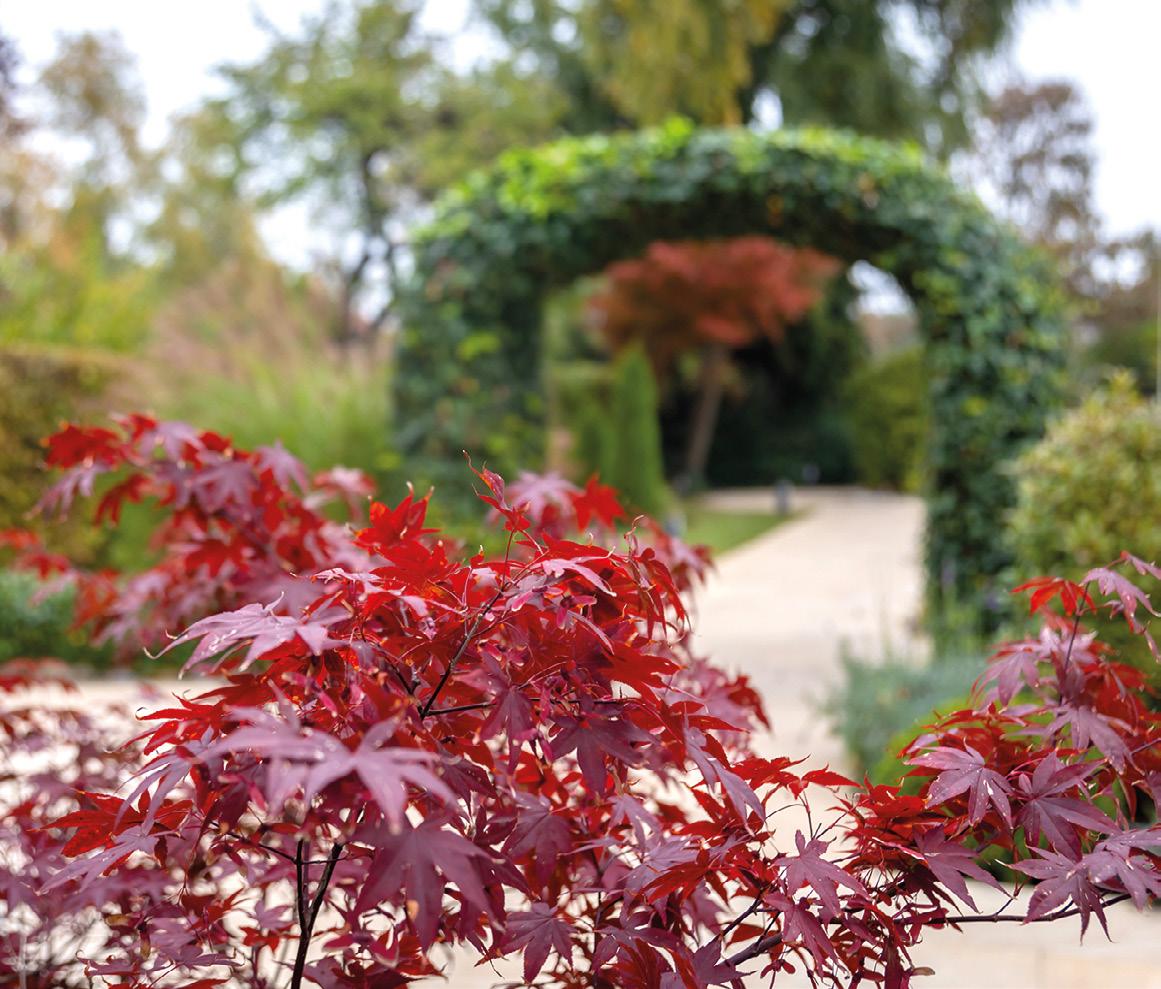
The lush garden of the residence is breathtaking regardless of the season
The ambassador admits that he enjoys the garden of the residence, especially as a great nature lover
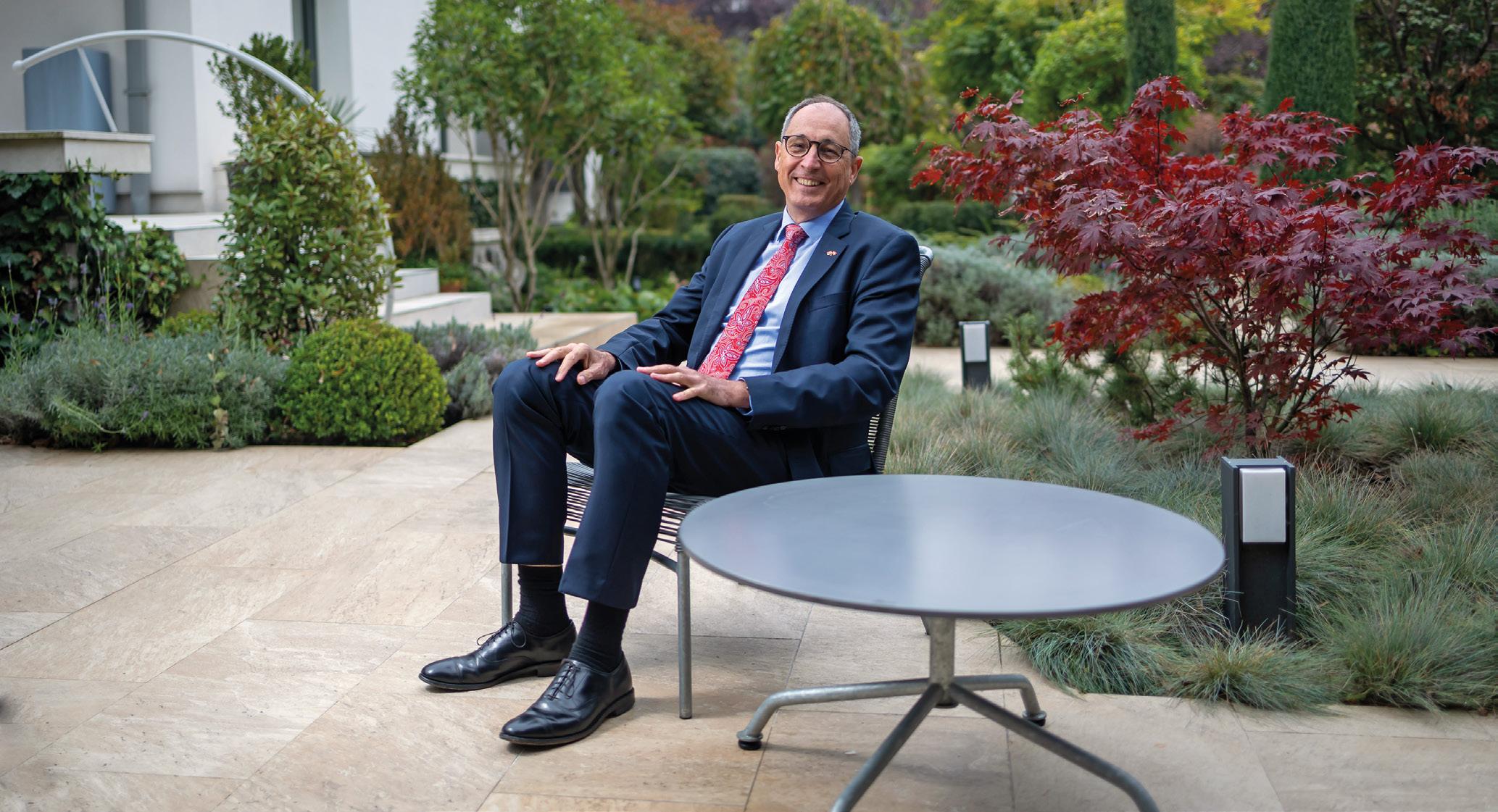
strategic approach of Serbia of developing an increasing number of cities and regions such as Vrnjačka Banja, Vrdnik, the Ovčarsko-kablarska gorge, Kopaonik or Zlatibor, and promoting them effectively, may greatly enrich Serbia’s tourism offer. For the development of a strong and sustainable tourism industry, it will be important to put in place an adequate infrastructure that complies with the most advanced standards of environmental protection. I am pleased to note that Switzerland is already supporting this development with contributions that are setting new standards e.g. in rail transport or in hospitality. Given the extensive Swiss expertise in these fields, I see a great potential of expanding further our bilateral economic cooperation.
In terms of Serbia’s natural beauty, how has it enchanted you throughout the past two years that you’ve lived here?
— As most Swiss people, I am a nature-lover and I think that many people in Serbia share this love of nature too. The possibilities for hiking, skiing, swimming, canoeing and many other outdoor sports are plenty in Serbia and this has really been a big “plus” of living here. My wife and I both love hiking, and Serbia offers plenty of possibilities to combine a day of hiking with the visit of a monastery, the ruins of a medieval castle or a historic spa. Concluding e.g. a day spent in the autumnal forests above Vršac by sitting under a walnut tree in the yard of a winery in Gudurica and tasting an excellent regional wine feels like heaven.
You have served in several diplomatic missions across the world, as well as having lived and worked in different geographical and cultural settings. How did Belgrade’s way of life suit you? What distinguishes Belgrade from places like London, Budapest, Geneva, or Astana in Kazakhstan?
— Each city has its own character or feeling given by its specific mix of architecture, history, people, food, weather and other factors. Belgrade is a place that has been able to harness the best of many worlds and, as such, is a wonderful place to live in and to discover. It has a more “Mediterranean” feeling than London or Geneva and it is definitely very “European” if you compare it to Astana. What I love about Belgrade is the different atmospheres you can find: from Skadarlija, to Beton Hala, from Dorćol to Novi Beograd, from the busy Knez Mihailova to the calm banks of the Sava… There are many cities in one and you can always find a place to match your mood.












